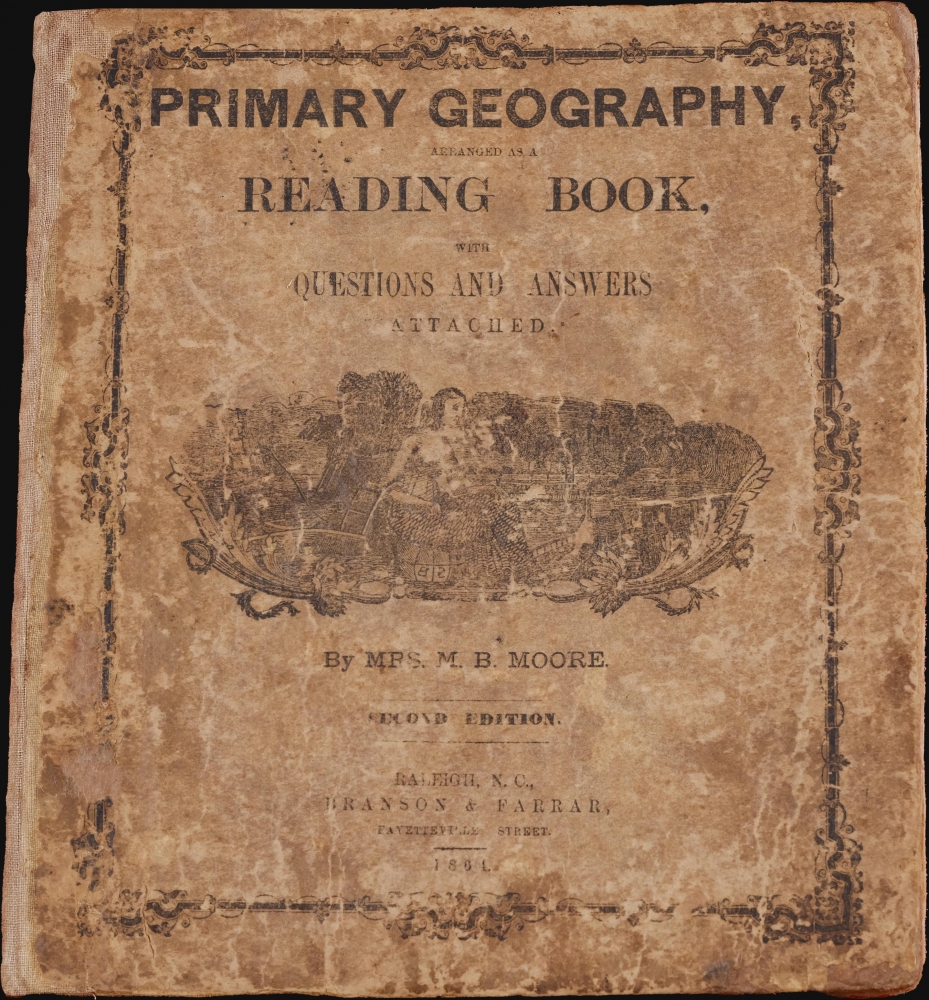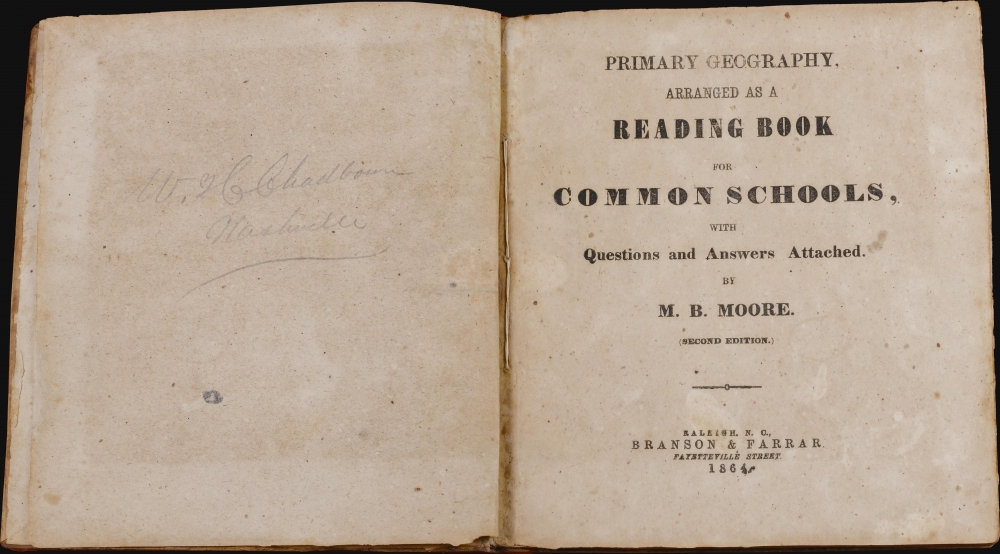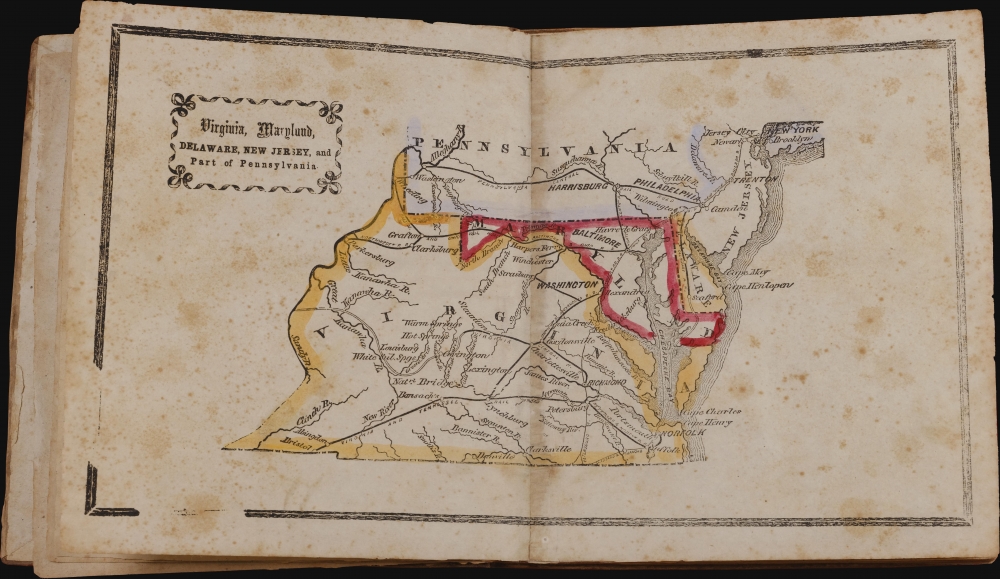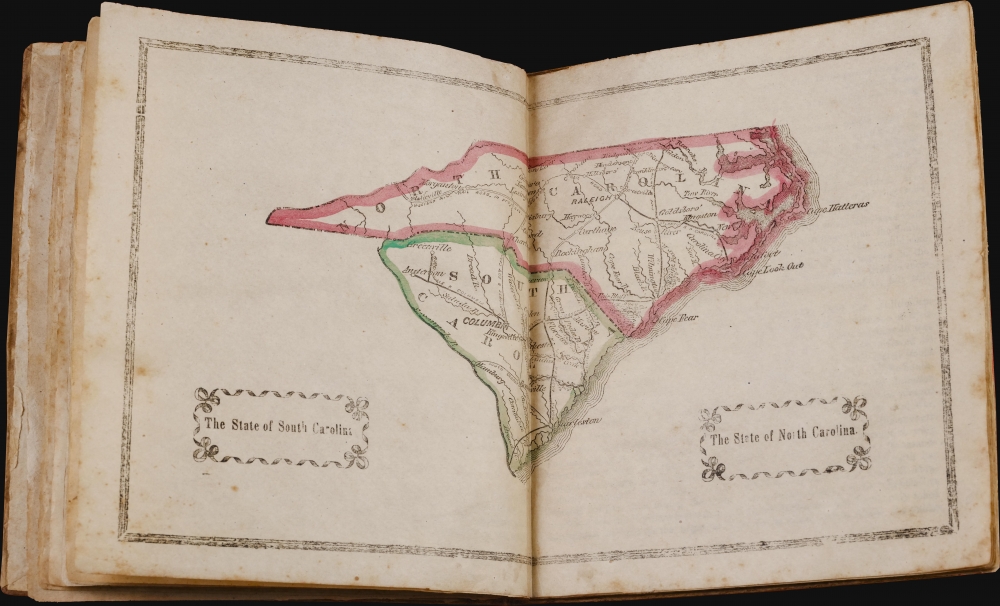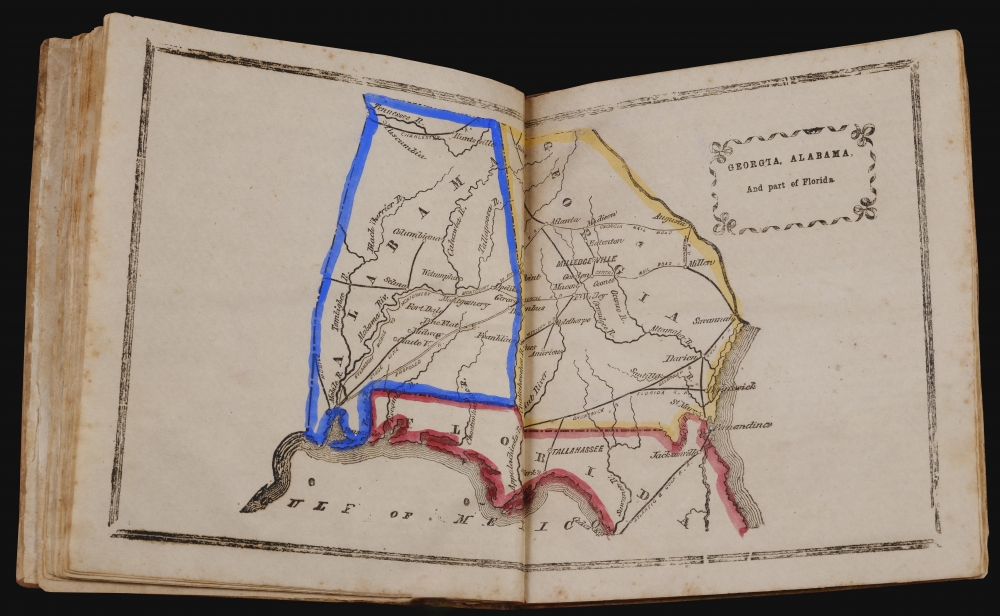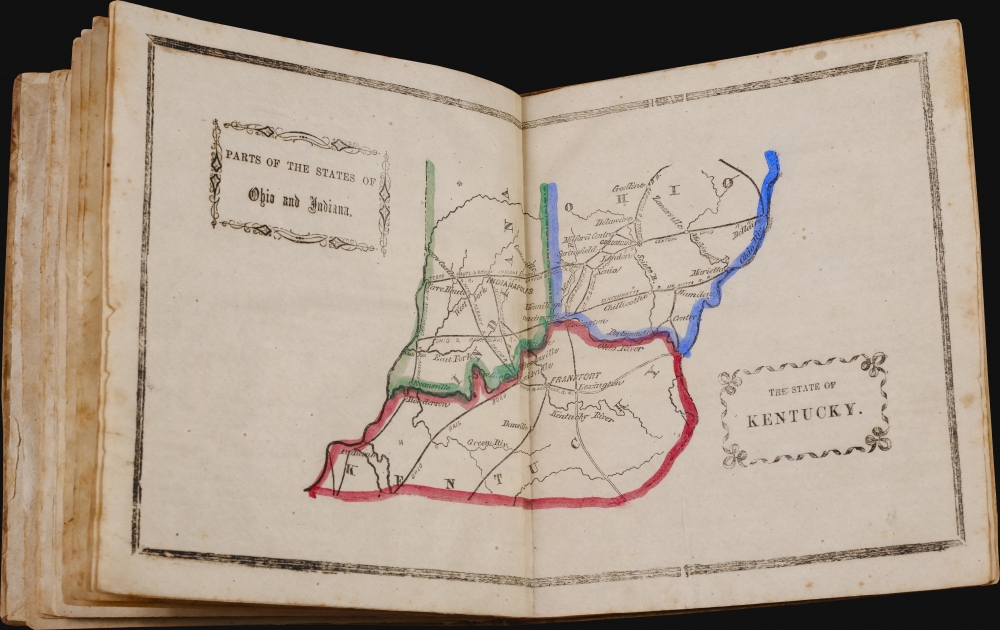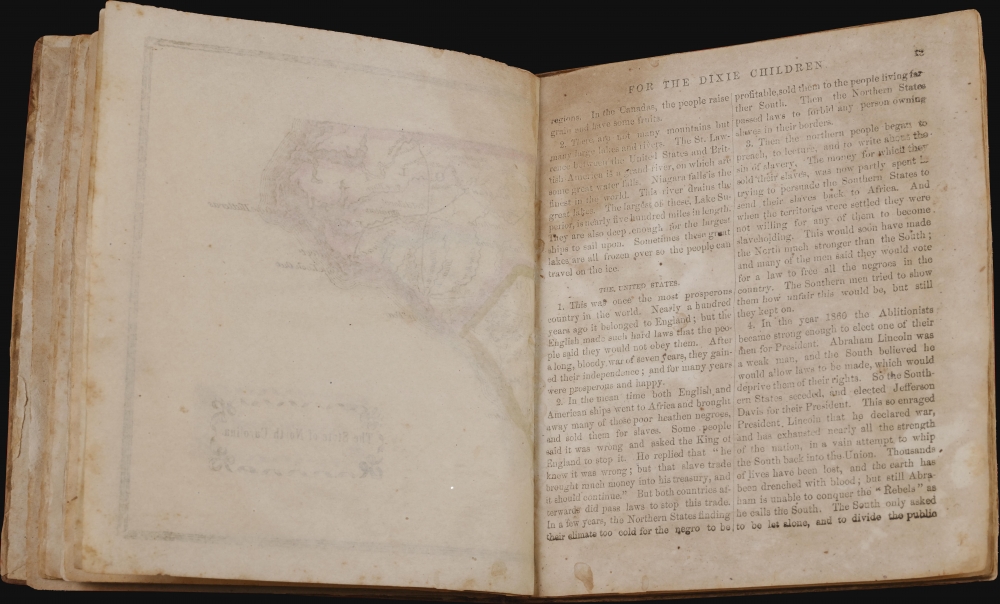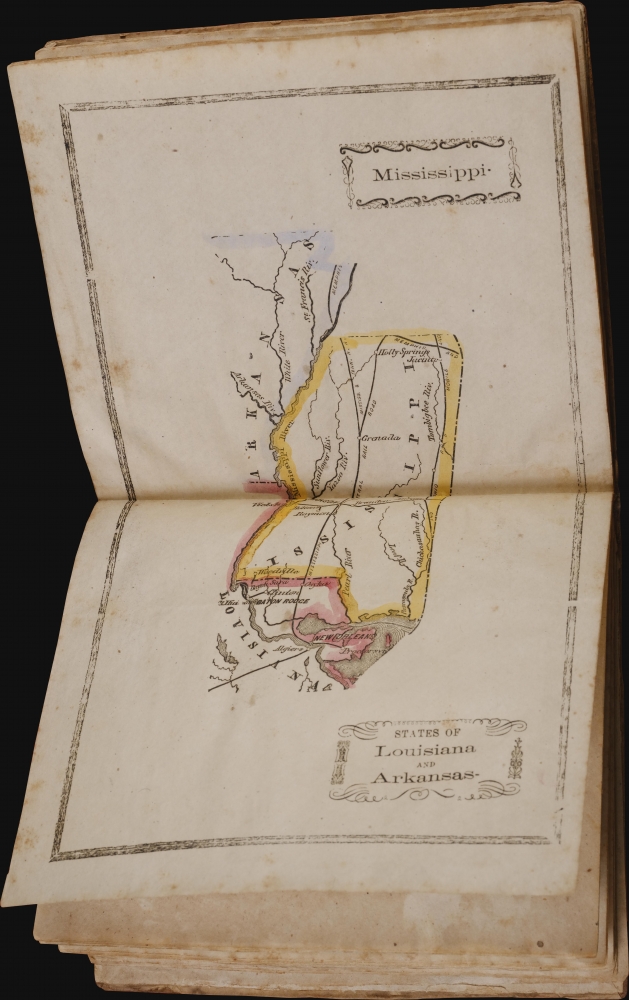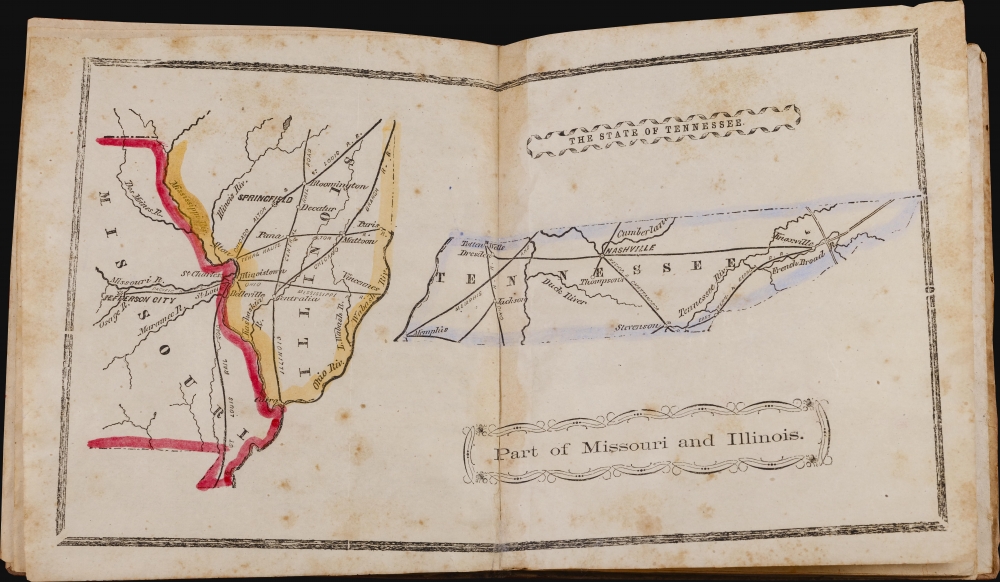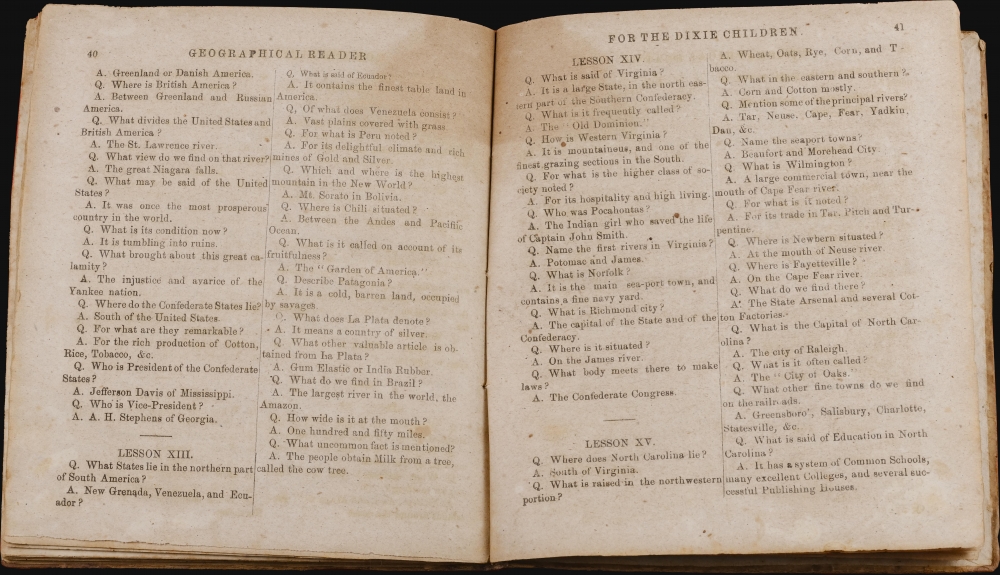This item has been sold, but you can get on the Waitlist to be notified if another example becomes available, or purchase a digital scan.
1864 Moore Geographical Atlas for Confederate Children, published in Raleigh, S.C.
DixieGeography-moore-1864
Title
1864 (dated) 8 x 7 in (20.32 x 17.78 cm)
Description
A Closer Look
The work contains 48 pages and is broken into two sections. The first 29 pages, including 6 maps of the Confederate states supplemented by a general geography, describing places and peoples of the world. The second part is formatted as a 'questions and answers' broken into 28 'lessons' on each of the southern states, as well as on commerce, politics, race, and religion.Anti-Union Content
The text is a vituperative degradation of Northern states, values, and politics. Of the Union, which she refers to as 'the Yankee Nation', she writes (grammatical errors copied verbatim),This was once the most prosperous country in the world … In the year 1860 the Ablitionists became strong enough to elect one of their men for President. Abraham Lincoln was a weak man, and the South believed he would allow laws to be made, which would deprive them of their rights. So the Southern States seceded, and elected Jefferson Davis for their President. This so enraged President Lincoln that he declared war, and has exhausted nearly all the strength of this nation, in a vain attempt to whip the south bac into the Union. Thousands of live have been lost, and the Earth has been drenched with blood; but still Abraham is unable to conquer the 'Rebels' as he calls the South. The South only asked to be let alone, and to divide the public property equally. It would have been wise in the North to have aid to her Southern Sisters, 'If you are not content to dwell with us longer, depart in peace.And the last sentence,
Q. What is the present drawback to our trade?
A. An unlawful Blockade by the miserable and Hellish Yankee Nation.
Racist Anti-Abolitionist Content
The work further contains significant pro-Slavery and generally racist content, reflective of the attitudes then prevalent in the Confederacy. The content is unique primarily in that it is staged within the didactic context of young children. Moore expresses the argument, common in the Confederacy, that by enslaving Africans and bringing them to America, their situation is improved through the introduction of Christianity, education, western style dress, and law. Although outrageous and offensive by all modern standards, this was the primary moral and religious justification for slavery in the Antebellum South. In Moore's language,Q. Which race is the most civilized?
A. The Caucasian.
Q. Is the African savage in this country?
A. No; they are docile and religious here.
Q. How are they in Africa where they first come from?
A. They are very ignorant, cruel and wretched.
Publication History and Census
This volume was composed by Marinda Branson Moore and published by 'Branson and Farrar' of Raleigh, North Carolina. The first edition appeared in 1863, with the present second edition, issued in 1864. Both are among the few publications issued in the Confederacy during the American Civil War. Like most textbooks of the period, printing is poor and paper quality low, and so few survived rigorous schoolroom use. The work is represented in several institutions, but due the loose cataloging of reprints and digital copies, it is impossible to compile an accurate census. Scarce on the market. The last example we see on the market was sold at Christies in 2019 for 8750 USD, plus premium.Cartographer
Marinda Branson Moore (December 16, 1829 - June 27, 1864) was a North Carolina educator and writer of textbooks. Moore was born in Randolph County, North Carolina. She was the first wife of businessman Enoch William Moore (1868 - 1952), who ran a mill complex, Moore's Mill, in Belews Creek, NC. In 1855, she founded the Margarita Seminary, named after Margarita Nixon, a missionary to China. While always a religious and political conservative, as tensions over slavery and states' rights peaked in the leadup to the American Civil War (1861 - 1865), Moore's attitudes became increasingly polarized. She was not alone in her belief that textbooks and other educational materials, most of which were published in New England, were antithetical to the political, moral, and social values of southern states. She began writing and printing her own textbooks, which she called 'Dixie Readers', which were published during the Civil War by Branson and Farrar in Raleigh, North Carolina. The most prominent of these was her Primary Geography, which although deplorably racist by modern standards, is unique reflects the ethos of Southern values at the height of the war. The work was popular enough to have gone through two editions. She died in 1864, before the end of the Civil War. More by this mapmaker...

